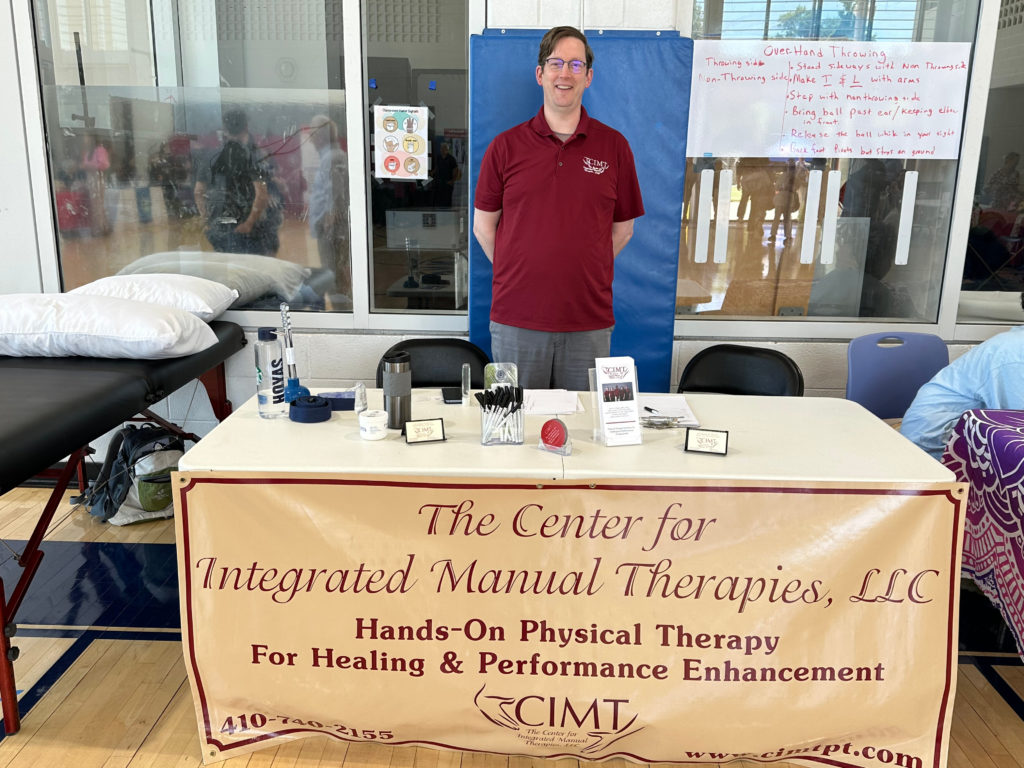PT in Tenleytown!

Our excellent physical therapists, Karen and Brett, attended the Tenleytown Health & Wellness Day on Saturday, May 10th! Brett conducted a few free consultations, and both had the opportunity to interact with small businesses in the community! We shared our mission of compassionate care and connected with like-minded healthcare professionals in the area. Thank you tenleytownmainstreet for promoting small businesses! !
Click here to read out post!
Has your doctor ever referred you to a physical therapist for treatment? According to the American Physical Therapy Association, the goal of physical therapy (PT) can vary from improving mobility to restoring function. It may also be to reduce pain and prevent further injury. Physical therapists are specialists trained to treat conditions that affect how your body moves. They may perform hands-on treatments for your symptoms and teach you special exercises to help you move and function better. If you have a serious illness or injury, a PT won’t take the place of other doctors, but they will work with your doctors and other health care professionals to guide treatments.In the U.S. a physical therapist must have a bachelor’s degree and take additional courses, such as anatomy and biology, in a variety of medical topics related to the work they will do. A typical PT candidate spends about 3 years studying before they earn a Doctor of Physical Therapy degree. They must also pass a state test to obtain a license to practice in that state.
The Center for Integrated Manual Therapies, with an office at 4801 Wisconsin Ave in Tenleytown, has shared that they consider the role of the physical therapist to be creating a healing environment in which physical therapists have ample one-on-one time with clients to significantly improve outcomes, and to help each person treated to reach their highest potential. They offer 60 minute treatment sessions by licensed physical therapists to determine the cause of and alleviate pain, and improve posture, strength, and movement. Their physical therapists are highly specialized in manual therapy training. Less than 1% of the physical therapists in the US have this level of training. Should you wish to reach out to The Center for Integrated Manual Therapies, they can be reached at www.cimtpt.com, or by emailing scheduling@cimtpt.com.: PT in Tenleytown!
News / Physical Therapy
To Bike or Not to Bike?!?!
By: Ric Wray
To Bike or Not to Bike: Common Cycling Injuries and How to Prevent Them
News / Physical Therapy
 18 Nov 2024
18 Nov 2024
Holiday Toy Drive!
This holiday season, let’s come together to spread joy and warmth to children in need! We are excited to announce our Holiday Toy Drive (Marine Corps Toys 4 Tots) has started and invite you to help make the season brighter for those who need it most.
How You Can Help:
Donate new, unwrapped toys for children of all ages.
Drop-off Location: Chase Performance/CWC Waiting Room or CIMT Columbia Office
Deadline: December 16th— All donations must be received by this date to ensure timely delivery.
Whether it’s a teddy bear, board game, or action figure, every donation counts and will bring a smile to a child’s face this holiday season.
Let’s spread the magic of the holidays together! ✨ Your generosity will make a real difference in the lives of many children and families in our community.
Thank you for your support, and happy holidays!
News / Physical Therapy
 19 Sep 2024
19 Sep 2024
Please welcome our new physical therapist
The Center for Integrated Manual Therapies is happy to welcome Dr. Brett Jackson to our practice. Please take a look at Brett's Biography on our website:
https://cimtpt.com/team/brett-jackson-3/
News / Physical Therapy
 09 Jul 2024
09 Jul 2024
Please welcome our new physical therapist
The Center for Integrated Manual Therapies is happy to welcome Dr. Ricardo Wray to our practice. Please take a look at Ricardo's Biography on our website:
https://cimtpt.com/team/ricardo-wray/
News / Physical Therapy
